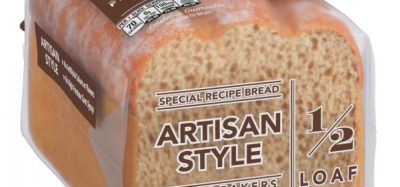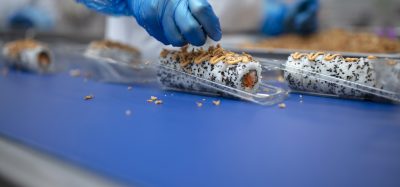Ensuring safety with food grade lubricants
- Like
- Digg
- Del
- Tumblr
- VKontakte
- Buffer
- Love This
- Odnoklassniki
- Meneame
- Blogger
- Amazon
- Yahoo Mail
- Gmail
- AOL
- Newsvine
- HackerNews
- Evernote
- MySpace
- Mail.ru
- Viadeo
- Line
- Comments
- Yummly
- SMS
- Viber
- Telegram
- Subscribe
- Skype
- Facebook Messenger
- Kakao
- LiveJournal
- Yammer
- Edgar
- Fintel
- Mix
- Instapaper
- Copy Link
Posted: 9 October 2019 | Andy Howard | No comments yet
Andy Howard, Food Processing and Hygiene Segment Specialist at ROCOL, discusses the importance of using food grade lubricants in food manufacturing.


Health and safety are a priority for any food and drinks manufacturer, with standards of cleanliness and hygiene on the factory floor needing to rival those of an operating theatre.
When it comes to the machinery used in these environments, the same high standards apply, and it is ongoing equipment maintenance that keeps the business of feeding the nation on track.
The products you select for machine maintenance have a huge impact on equipment performance and production efficiency, but they also have a wider role to play.
If you operate in a food or drinks manufacturing environment, food grade lubricants must be used to maintain machinery. But, the wrong lubricant in the wrong place can present a contamination risk, resulting in a shutdown or, worse still, a product recall.
Be it through incorrect application or accidental leakages, lubricant leaks can happen. As a result, they can become indirect additives, leading to contamination of a food product on the production line.
Lubricants do not discriminate against what they encounter, so selecting the right lubricants is essential.
Key qualities and types of food grade lubricants
For a lubricant to be classified as food grade, the product must have undergone independent testing by the National Sanitation Foundation (NSF) and been certified as safe for use in manufacturing processes and applications where there may be incidental contact between lubricant and foodstuffs on the production line. The maximum permitted amount of food grade lubricant in an incidental contact is 10 parts per million (ppm).
A food grade lubricant must be capable of performing the same technical functions as other lubricants used in general manufacturing environments: providing protection against degradation through wear, friction, corrosion and oxidation, dissipating heat and transferring power.
It must be able to resist degradation from chemicals, water and steam, and show neutral behaviour towards plastics and elastomers. Furthermore, it needs to be capable of high performance in extreme environments and conditions, such as heat and cold, extreme dust levels, or bacteria and fungi.
On top of these performance demands, a food grade lubricant must meet the stringent criterion set out by the NSF – a global, independent organisation that protects human health by developing public health and safety standards through the provision of certification and testing services.
The NSF food grade lubricant regulations look to ensure that products have been evaluated, tested, and comply with public health standards for incidental contact with food.
Food grade lubricants are divided into three types, as classified by the United State Department of Agriculture (USDA).
- H1 lubricants – used in food processing environments where there is the possibility of incidental food contact
- H2 lubricants – not food safe but can be used on equipment and machine parts in locations where there is no chance of the lubricant meeting any food product
- 3H lubricants – typically edible oils and used to prevent rust on hooks, trolleys and similar equipment, as well as employed as release agents. When dual registered as both 3H and H1, a lubricant can be used as a direct food contact lubricant.
The process of deciding whether there may or may not be contact is complicated. As such, many food manufacturers tread with caution and choose to use NSF H1 lubricants throughout their factories.
ROCOL provides an additional level of safety assurance through its ISO 21469:2006 certification. Like NSF H1, this certification is globally recognised and important for BRC audits as it provides credible, independent assurance that products are formulated, manufactured and supplied hygienically and safely.
For processors, sourcing NSF H1 lubricants from an ISO 21469:2006 certified manufacturer represents the belt-and-braces approach to reducing lubricant contamination risk – the importance of which cannot be understated in today’s climate.
Why food grade?
The 2013 horse meat scandal moved traceability high up the agenda of food manufacturers across the globe, where it has stayed ever since.
The repercussions of contamination incidents and product recalls for manufacturers are serious, and it is not just about financial losses. Reputational damage and loss of brand equity can do just as much harm to a business. Add to that the potential production losses through equipment downtime, and the decision to invest in lubricants and greases that are registered as safe for incidental contact with food becomes a relatively easy one. The alternative is to use products that are not certified as food safe, a decision that will be scrutinised by auditors or in the event of a contamination safety incident or product recall.
Maintenance matters
Regular machinery maintenance is essential to avoid downtime due to breakdowns and to prolong equipment life.
Every factory and processing plant should have a comprehensive maintenance plan that records the work carried out and when it has been carried out. This helps maintenance engineers in food processing environments reduce the risk of lubricant or foreign object contamination; a vital step in maintaining operational safety at a consistently high level.
Implementing a formal lubrication management assessment and programme plan takes this a step further, helping to ensure high levels of food safety throughout production facilities. A good lubrication management programme will assess every dimension of the production area, from equipment audits, through to lubricant application frequency and techniques, to signage and training.
The ROCOLcare programme, which is compatible with a total preventative maintenance strategy employed by many food manufacturers, starts with a survey that encompasses equipment, products, application methods and frequency for each asset. A lubrication schedule is developed, which ensures that the right product is used in the right quantities and at the right intervals to maximise machine performance and efficiency. Within the lubrication management programme, performance measures are set to monitor and report every single application and training needs are identified.
The results of implementing a lubrication management programme are an agreed roadmap to increased operational efficiency, peace of mind that your lubrication usage is fully audit compliant, and tangible bottom-line benefits of rationalised lubricant usage.
It goes without saying that consumers do not want to find any chemical or foreign body in their food or drink. Earning consumer trust in your products and brand and maintaining that trust is crucial.
Identifying food grade lubricants
A food grade lubricant recipe has been checked and approved by the NSF. All registered food grade lubricants must display the NSF logo, certification number and relevant category codes (H1, H2, 3H etc.).
In addition, auditors are beginning to request evidence of food grade lubricant use. ISO 21469 gives this reassurance. The ISO 21469 standard specifies hygiene requirements for the formulation, manufacture, use and handling of lubricants, providing assurance of their suitability for food industry use. Selecting products from an ISO 21469 approved supplier gives you both peace of mind and audit compliance.
Taking a proactive approach to maintenance and selecting the products you use throughout your manufacturing environment with care means you can be confident that you are taking every possible step to maintain high production standards and protect your customers – and your business – from the adverse effects of product contamination.
About the author
Andy Howard is a ROCOL Segment Specialist. He is a Chartered Engineer who has worked in the Food Processing and Hygiene segment at ROCOL for 15 years. In this time, he has headed up teams working across Europe and the US.
Related topics
Equipment, Food Grade Lubricants, Food Safety, Health & Nutrition, Hygiene, Regulation & Legislation
Related organisations
ROCOL, The National Sanitation Foundation (NSF), The United State Department of Agriculture (USDA)









